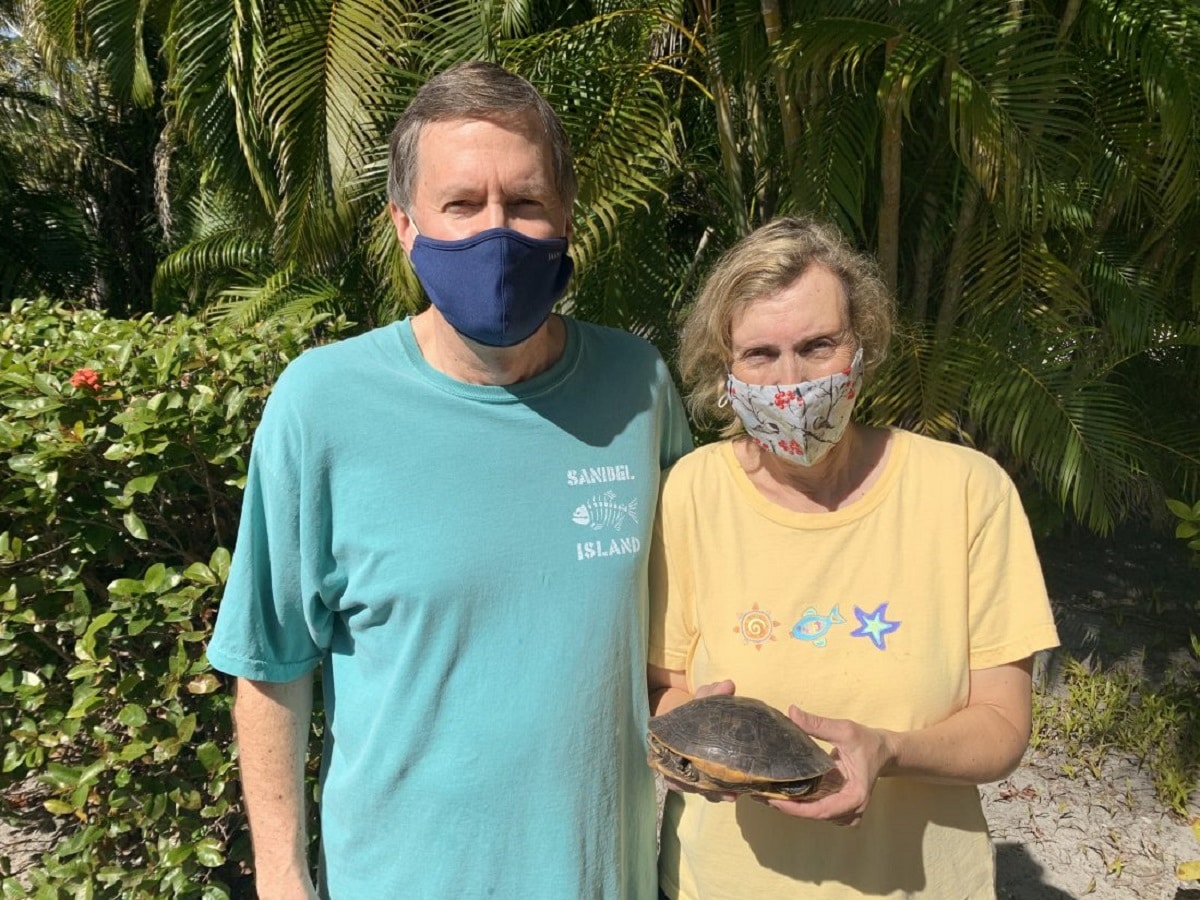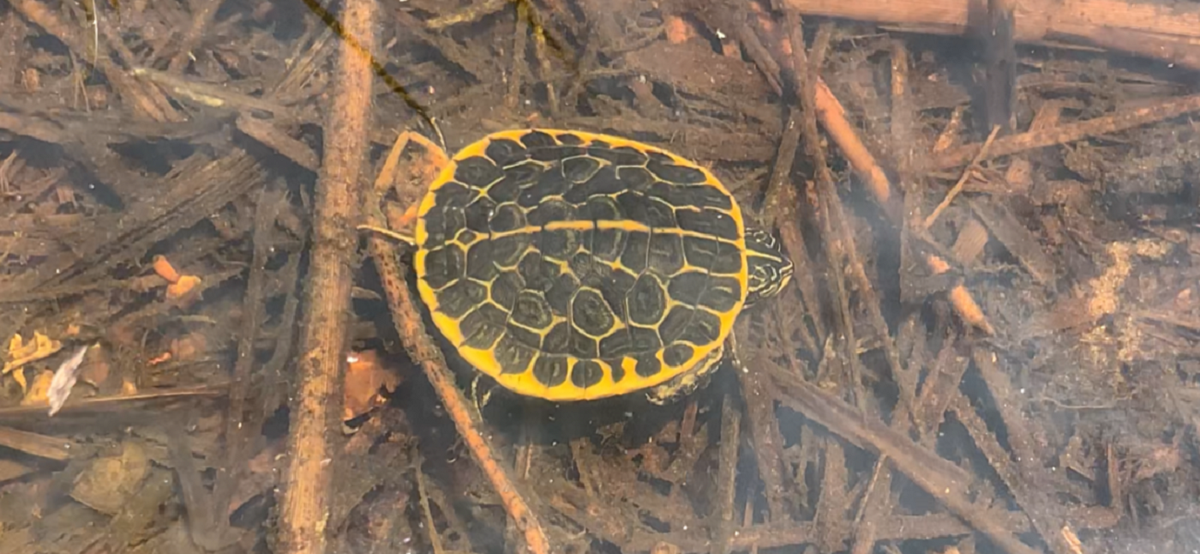

During the last 30 years, the Florida chicken turtle has been rare on Sanibel, with only four verified sightings between the 1980s and 2019. But that changed recently when Doug and Leah Beck, who are major supporters of the Sanibel-Captiva Conservation Foundation’s terrestrial and freshwater turtle research, alerted them to a strange-looking turtle crossing the street near their home.
They were excited to learn that it was in fact a pregnant female Florida chicken turtle, after a radiograph by the Clinic for the Rehabilitation of Wildlife (CROW) showed seven eggs. The turtle was then outfitted with a radio transmitter, which will help island scientists track her movement and learn which habitat she chooses during the dry and wet seasons.
The Florida chicken turtle is an ephemeral species of turtle that is only active at certain times of the year. They live around temporary water bodies and remain dormant in the dry season until the proper amount of water collects in wetlands during the wet season. Populations of the turtles are especially scarce on barrier islands because they need freshwater and feed mostly on crayfish, tadpoles, and fish.
HOW TO IDENTIFY THEM:
The Florida chicken turtle has an oblong shell shape, web-type patterns on the carapace, a very long neck like a softshell turtle, and a characteristic black bar on the bridge (running alongside both sides of the turtle’s body). No other U.S. species possesses the black-barred bridge.
They also have an odd nesting pattern and even stranger incubation cycle. Chicken turtle eggs have been shown to go through a diapause, or a pause in egg development, which means that the eggs don’t develop continuously as they do in other native turtles. Instead, they wait for an environmental cue, such as a seasonal temperature change or increased rainfall indicating the beginning of the rainy season. The longest-recorded incubation time for the species is about 18 months, versus most other turtle species that average about 60 days.
Because of the species’ unusual lifecycle and rarity, it’s easy to understand why these turtle lovers were so excitied about their find!
Thanks to our friends at the Island Reporter for the scoop!


